Complete your profile and access all the benefits
Update your profile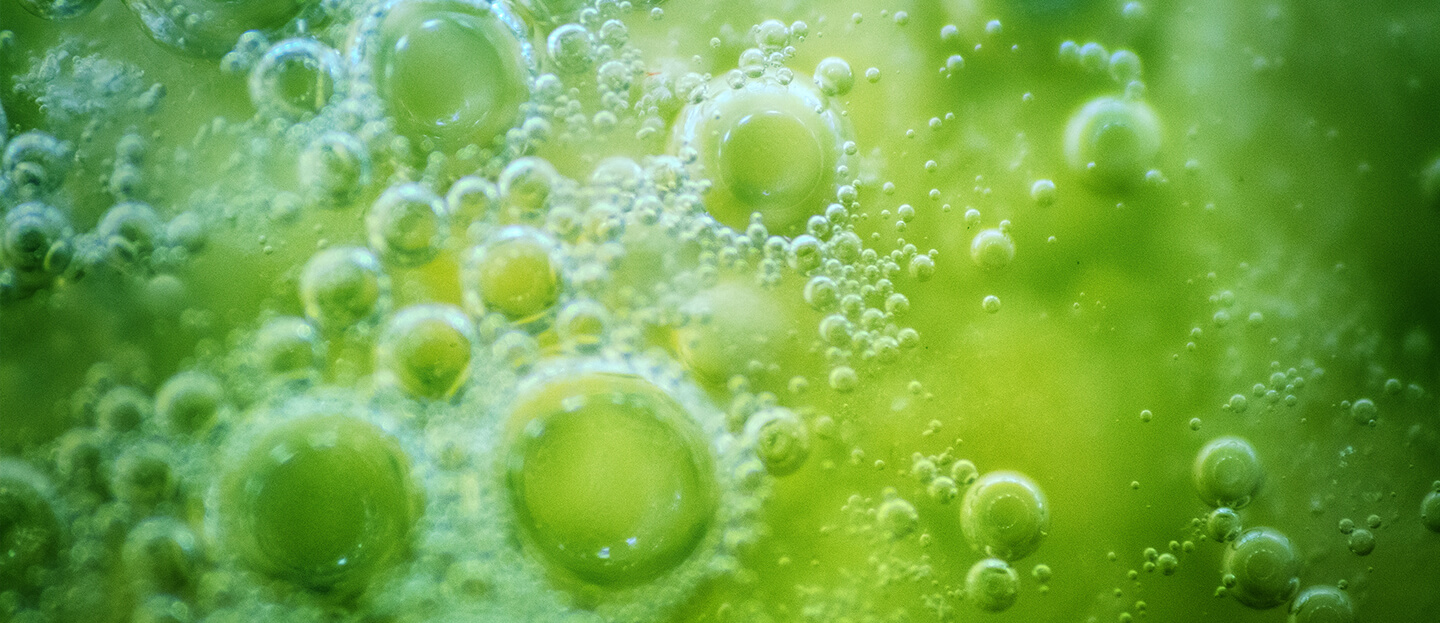
Lean Research Process
A unique concept that adapts the scientific method, more specifically in the pharmaceutical area, to the development of plant protection products.
A unique concept that adapts the scientific method, more specifically in the pharmaceutical area, to the development of plant protection products.
Projects
Each of our solutions are a result of our R+D+I’s unique teamwork methodology in projects.
The success of our method is based on a detection and understanding of the needs of each client, followed by a deep market study, allowing us to correctly state the objective of each project that includes the identification of a problem (pest, disease, nutritional) in a specific crop (target crop) and a specific country, which determines the environmental conditions in which this pest affects crops.
For instance, we would obtain very different results when studying the Sigatoka in bananas in Colombia, with high temperatures and high humidity, optimal environmental conditions for greater fungus proliferation, compared to Spain with lower temperature and humidity, where the fungus barely proliferates.

The Method
Once the project objectives have been defined, to obtain a new biopesticide, the following steps are taken:
-
1. General data gathering phase

Comprised of three different levels:
- Problem objective of the project: Collection, study and group discussion of all information related to the pest, disease or nutritional problem.
- Target crop: Collection, study and group discussion of all information related to the target crop.
- Target Country: It includes the country’s market study, supply and demand studies, and specific regulations, on the use, application, and registration of formulations of natural origin.
-
2. Selection and prioritization of raw material
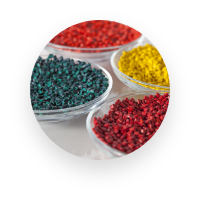
- Data gathering: The success of the solution is in the composition of its active ingredients. We have designed a unique methodology for searching raw materials of natural origin: botany, microbiology, microalgae and green chemistry, with direct or indirect effect (defense inducer) on the problem to be solved in each project. The methodology includes researching for detailed and specific information on potential raw materials, gathered from specialized scientific literature, traditional and ethnobotanical knowledge, information included in pharmacopeias, knowledge acquired by our own work experience, and other specific documentary blocks for each project. At the end of the data gathering process, all the necessary information on each raw material is available, such as part of the plant to be used, extraction methods, chemical composition, modes of action, among others.
- Prioritization: Once the data gathering phase is completed, a ranking of each of the natural raw materials is carried out, taking into account different criteria depending on the project.
Supplier search: Once the raw materials have been selected and prioritized, it is necessary to identify the potential suppliers of the selected materials. We work with optimal raw materials extracts, authentic and controlled throughout their obtainment process. Therefore, the traceability, purity, and homogeneity of the raw material offered by the supplier are of utmost importance.
-
3. Selection and optimization of the process of extraction and/or production of metabolites
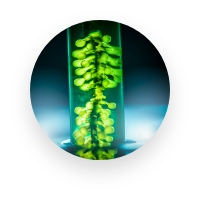
Extraction is a process that involves the separation of bioactive components from inert matter found in naturally occurring tissues, through the combined use of different extractive methods and selective solvents. Our line of production and optimization of formulations includes the design, development, and optimization of extraction and separation processes of the active principles from the selected raw materials.
The extraction technology used will depend on the raw material selected, the part used of said raw material and the chemical composition that we want to obtain. These go from conventional methods (Soxhlet-Hydrodestilation-Clevenger, vapor distillation) to the most advanced methods such as the use of supercritical fluids, ultrasonic assisted extraction, multifunctional dispersion systems/colloid mill, as well as fermentation processes and enzymatic hydrolysis.
Each of the variables of the selected process is studied and optimized in pilot prototypes at the laboratory level and subsequently in a scaled process. At the end of this phase, chemically characterized crude extracts are obtained and ready for the biological screening phase.
-
4. Synergy 4 natural areas

-
5. Laboratory screening through specific bioassays
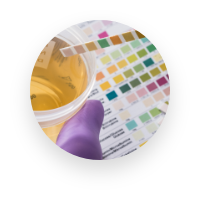
The selected extracts are screened against the target problem (pest, disease, nutritional deficiency) depending on the project. To do this, in the lab we have adapted, from specialized scientific literature, more than 10 types of specific micro assays in plaque and plant level in order to correctly evaluate the insecticidal, acaricidal, nematicidal, fungicidal, bactericidal, phytotoxic, biostimulant activity , as well as the induction capacity of defense of any raw material.
For each of the projects we have established very restrictive efficacy thresholds so that the selected extracts reach the final stages of the process. At the end of this stage, a selection of extracts of botanical, microbiological and microalgae origin is obtained, which, given their effectiveness, are candidates to be part of the final formulation. Each of the extracts carries specific information on effective rate, chemical profile, phytotoxicity, effect on secondary fauna, permanence in the plant, mode and mechanism of action.
-
6. Prioritization of the selected extracts

The selected extracts are submitted to a ranking process to determine which will pass the pre-formulation tests. For prioritization, the following are considered:
- Effectiveness: based on effective rates.
- Metabolomic profile: Molecular composition.
- Raw material: Availability and traceability of the raw material.
- Economic analysis: It includes a study of the entire production process costs.
- Regulation: Restrictions on use and registration in the target country.
- Toxicity and eco-toxicity: Existence of previous studies on toxicity and ecotoxicity studies.
- Ease of formulation: Mixing, formation of stable emulsions, joint extractions, etc.
Possibility of biodirected fractionation: In many cases, the fractioning of crude extracts has demonstrated the ability to significantly increase efficacy. After a rigorous prioritization of the extracts, taking into account their efficacy and associated metabolomic profile, we implement different guided bioassay chemical fractioning protocols that combine different chromatographic techniques, including flash chromatography (FC), liquid vacuum chromatography (VLC), preparative high-resolution liquid chromatography (prep HPLC). The chemical footprint of the fractions and products obtained is performed by gas chromatography coupled to mass spectrometry (GC-MS), high-performance liquid chromatography coupled to mass spectrometry (LC-MS) and nuclear magnetic resonance (NMR) techniques.
-
7. Pre-formulation and optimization
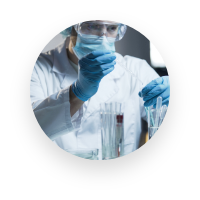
In this phase, the selected active ingredients are mixed (binary and tertiary synergies) to increase their effectiveness. In parallel, joint extraction tests of several selected raw materials are carried out in order to optimize the extraction process. Formulation stability studies are performed. The pre-formulates go back to screening to verify that the efficacy has not been lost during the formulation process.
-
8. Formulation and standardization
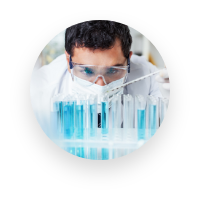
The pre-formulates selected for their efficacy, stability, and optimization capacity are subjected to the final formulation process through a specific technology designed for each project. All our formulations go through a process of biological standardization (based on the desired biological activity) and molecular (metabolomic profile). The evaluation of the biological activities is carried out using micro-tests at the laboratory-plant-field level applying biomodels (insect pests-vectors, fungi and phytopathogenic bacteria, plants, and phytoparasite nematodes), developed/adapted in our laboratory.
The total metabolome of the formulations and active ingredients is mainly determined by nuclear magnetic resonance (1HNMR), high performance liquid chromatography coupled to mass spectrometry (LC-MS) and gas chromatography coupled to mass spectrometry (GC-MS). The subsequent processing of them (chemometric analysis) gives us valuable information on the main components of the formulation.
-
9. Toxicity and ecotoxicity tests

The previous data study has defined what types of toxicological and eco-toxicological tests are required in the target countries for the use of the formulation. These tests are performed in accredited laboratories for this purpose.
-
10. Field validation tests
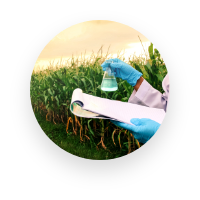
Each of the formulations is subjected to validation tests under semi-field, greenhouse and open field conditions. Previous laboratory tests establish the recommended effective rate. The tests are carried out according to statistical experimental designs and include rate studies, phytotoxicity, safety periods, knock-down effect, permanence, systemic, effect on auxiliary fauna, among others.
-
11. Dossier and registration

With all the information gathered during the documentation, processing of the raw material, production process, formulation, chemical composition, laboratory trials, field trials, and toxicological trials, a dossier is prepared to present in the pre- and registration procedures. In addition, all our formulations will carry out a life cycle analysis (LCA) with an evaluation of the environmental footprint.
.png)
.png)


